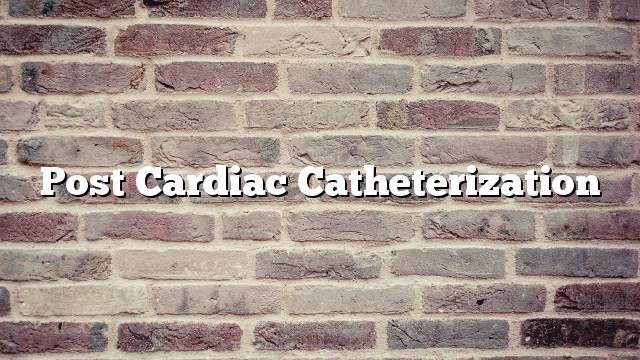Cardiac catheterization
Is one of the means used in some cases of heart disease and arteries, and resorting to cardiac catheterization in two cases:
The first case
The first is an exploratory catheter, in which the catheter is inserted into the main artery, which is usually a tube inserted into the body. The tube to explore arterial blockages, as well as to determine how strong the internal walls of the arteries are for other procedures, such as stabilizing supports or performing open heart operations to replace damaged arteries.
The second case
The catheter is inserted into the arteries to be enlarged in the same way as the previous one, but with a different fixation of the stent on the end of the tube passing from the inside of the artery. The stent is stabilized after expansion The artery through a balloon to do the job, and there are many types of stents that contain drugs and help to not narrow arteries again.
Post catheterization
In the post-catheter phase, you should make sure that you do not fall into the same habits that caused a problem with the arteries from the baseline, by moving away from foods that contain high ratios of fat and cholesterol, and work to reduce weight and get rid of obesity that Lead to narrowing of the arteries, stop smoking altogether, begin to exercise in a simple way at the beginning and increase gradually over time to maintain a moderate level of energy, and taking aspirin daily, because aspirin works to increase liquidity And therefore no coagulation.
After the catheter, the patient remains for several hours. In some cases, he stays in the hospital for a few days, in order to follow up and make sure that there are no complications, whether for the foot wound or the sensitivity of the patient of any kind. After recovery from the foot wound, which is a little painful in the early days, the patient can begin to exercise more, as walking and movement begin from the first day of the operation.
